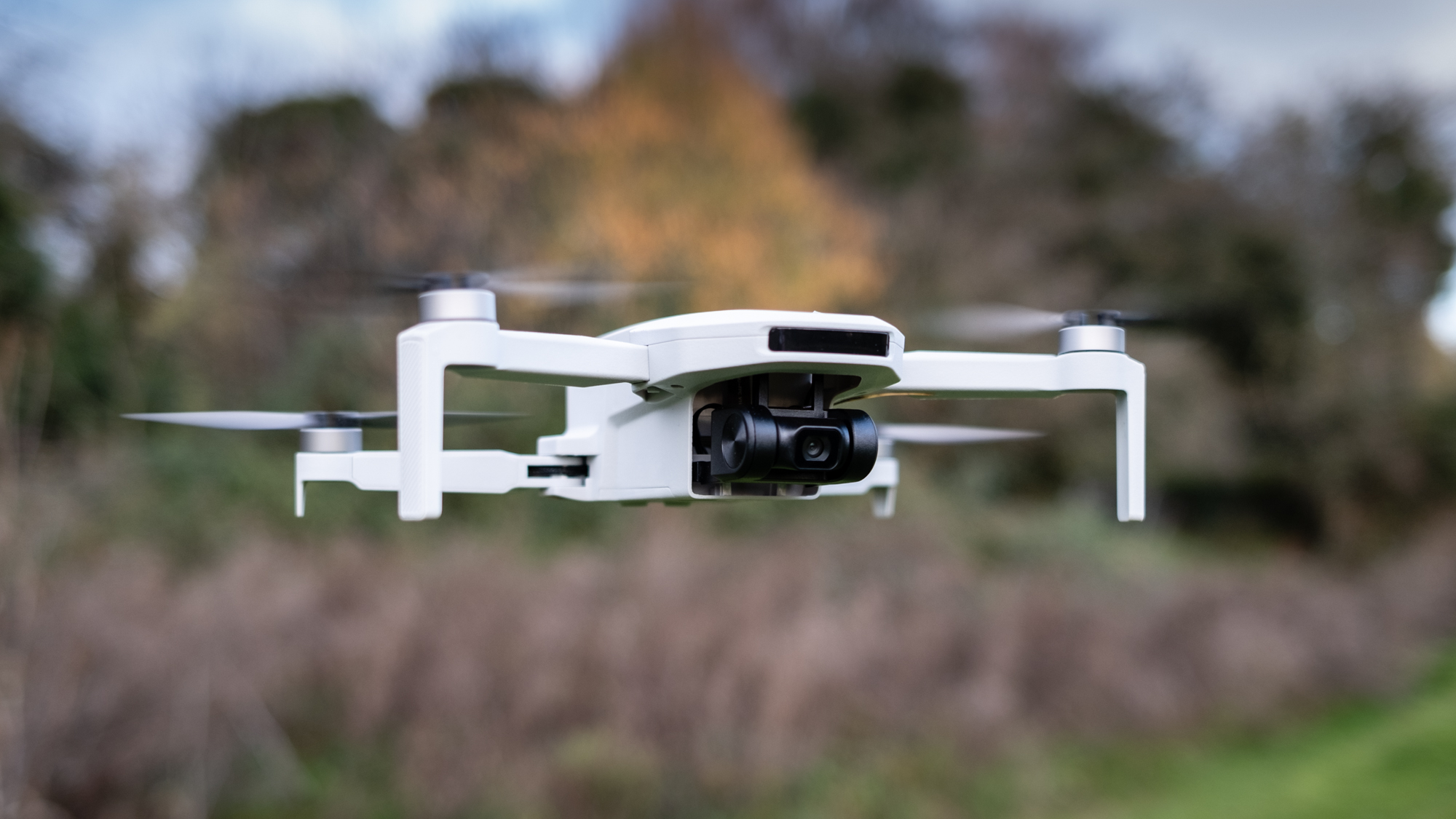Space Verdict
The Potensic Atom SE redefines what inexpensive beginner drone models are capable of alongside great build quality, but camera control is limited despite producing reasonably sharp images.
Pros
- +
Great value for money
- +
Easy to use sub 250g drone
- +
Good build quality
Cons
- -
Basic camera control
- -
No collision avoidance
- -
Sensitive controls
Why you can trust Space.com
Drones are constantly improving, with each year’s offerings providing more advanced features and functionality. The best drones available are, in many cases, incredible in terms of features and image quality. But as more advanced models improve, less expensive options inevitably follow suit, the list of best beginner drones is growing.
Weight: 8.64oz / 245g
Dimensions: Folded 88x143x58mm / Unfolded 210x152x58mm
Battery: 2500mAh Li-ion 2S / up to 31 minutes
Charger type: USB-C Cable
Modes: Video, Normal, Sport
Video transmission range: Up to 2.48 miles / 4km
Video resolution: 4K, 2.7K, 1080p (FHD)
Frame rates: 4K at 30fps / 2.7K at 30fps / FHD at up to 60fps
The Potensic Atom SE is the latest flagship model from the Chinese drone company that was founded in 2014. And where previous flagship models have followed design cues from DJI’s Phantom range for what you might call a traditional drone, the Atom SE is incredibly small and lightweight with a folding design that looks similar to the DJI Mavic Mini 2.
Highly portable sub 250g drones are incredibly popular and an inexpensive beginner model such as the Atom SE undoubtedly fills a gap in the market. The Standard kit costs $250 / £279 while the Fly More Bundle with a shoulder bag and additional battery costs $300 / £329, so getting started with drone photography and video using a small and lightweight model doesn’t have to break the bank.
The drone is well-built and offers a range of basic features that will keep many beginners happy. There’s no collision avoidance which is to be expected at the price, and camera control is limited for both photos and video. But for the former, unlike many competitor models at this price, you can shoot in both JPEG and Raw so there’s much more scope for editing photos. So, let’s take a closer look at what the Potensic Atom SE has to offer…
Potensic Atom SE review: Design
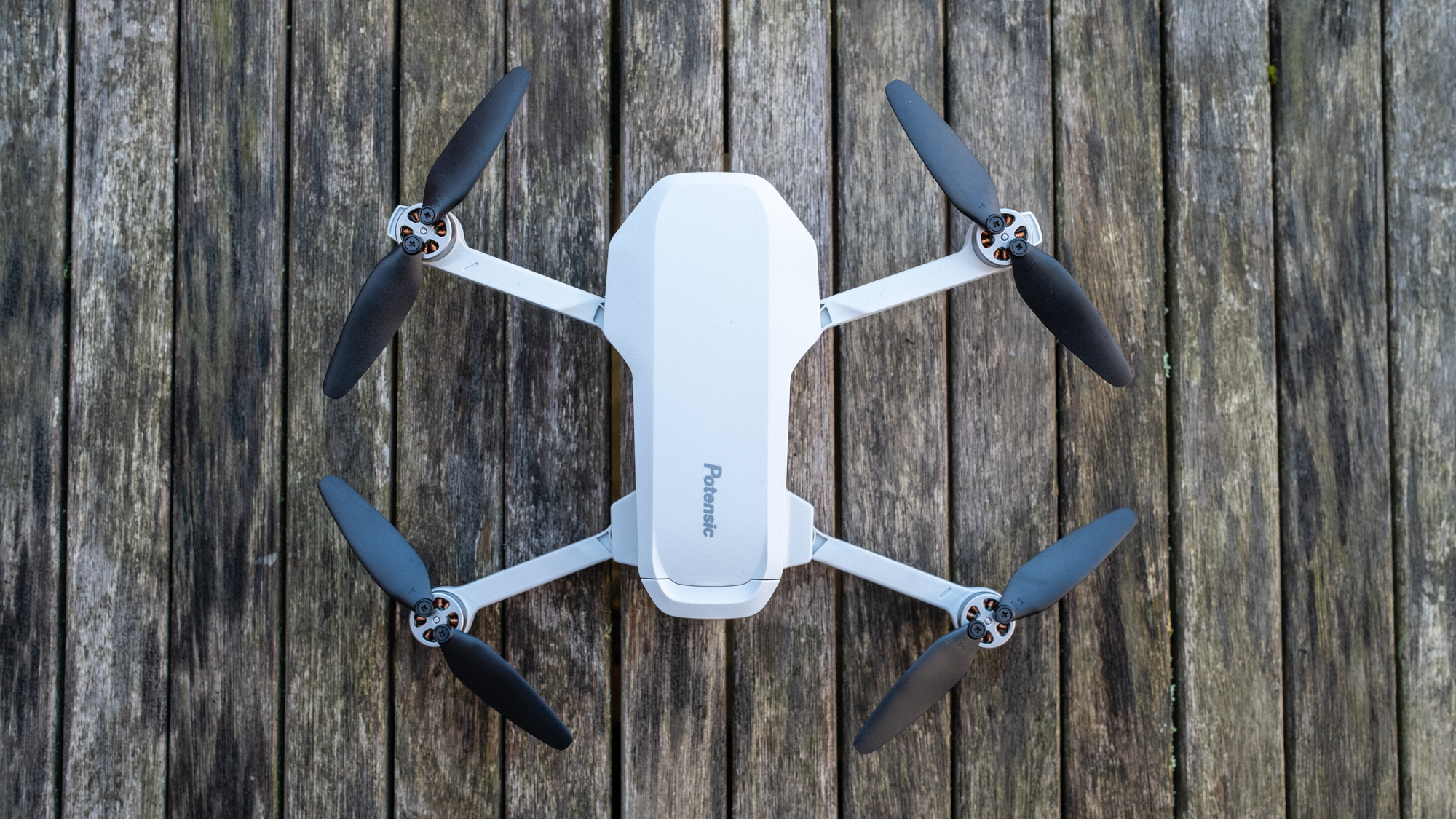

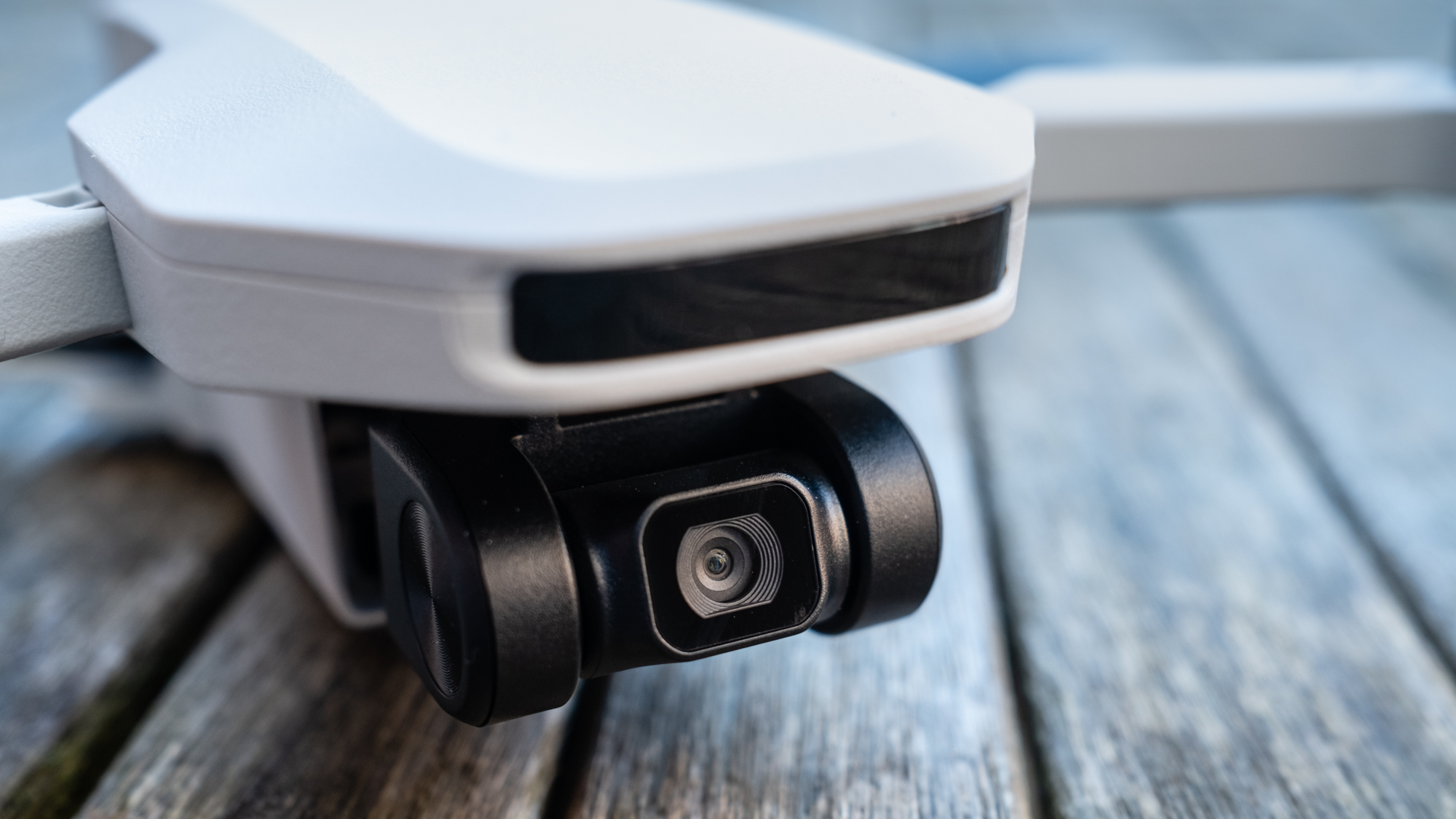
- Small folding design
- Weighs just 8.64oz / 245g
- Unique controller design
The Potensic Atom SE features a folding design where the front and rear propeller arms fold out for flight, making it extremely small for transportation. Folded, the drone is just 88x143x58mm with unfolded dimensions of 210x152x58 excluding propellers. The weight comes in at 8.64oz / 245g including a battery and a microSD card. This puts the drone in the regulator-friendly sub 250g category where it can be flown closer to built-up areas and people than larger and heavier drones, but check local regulations to be sure of what you can and can’t do.
Overall build quality is impressive considering the cost of the Atom SE. And the light grey airframe and overall design resemble the DJI Mavic Mini 2. The 103g 2500mAh batteries are advertised to provide a flight time of up to 31 minutes, which when tested in close to 0°C temperatures provided flight times around a respectable 20 minutes with a mixture of hovering, flight and video capture.

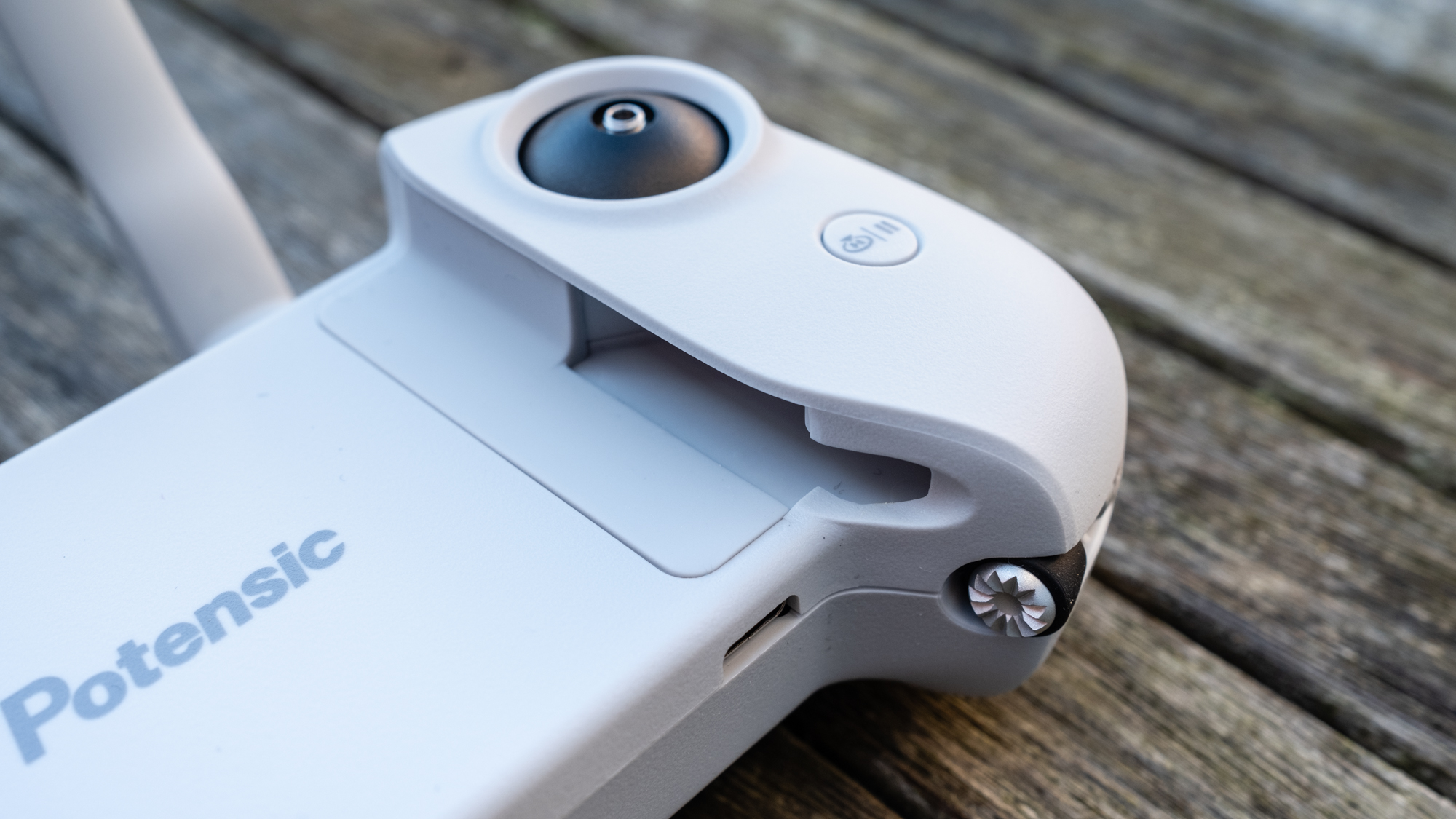



The controller is comfortable to use and features a unique design that helps to keep it fairly small when not in use. The antennas fold out from the central area between two handgrips and it’s here where the smartphone is held to access settings and control the camera.
Breaking space news, the latest updates on rocket launches, skywatching events and more!
The two handgrips extend outwards to hold phones of various sizes, and there’s a cavity to accommodate the end of the cable that connects the controller to the smartphone. The control sticks are screwed onto the controller gimbals, and when not in use they can be stowed away neatly at the bottom of the controller.
Potensic Atom SE review: Functionality
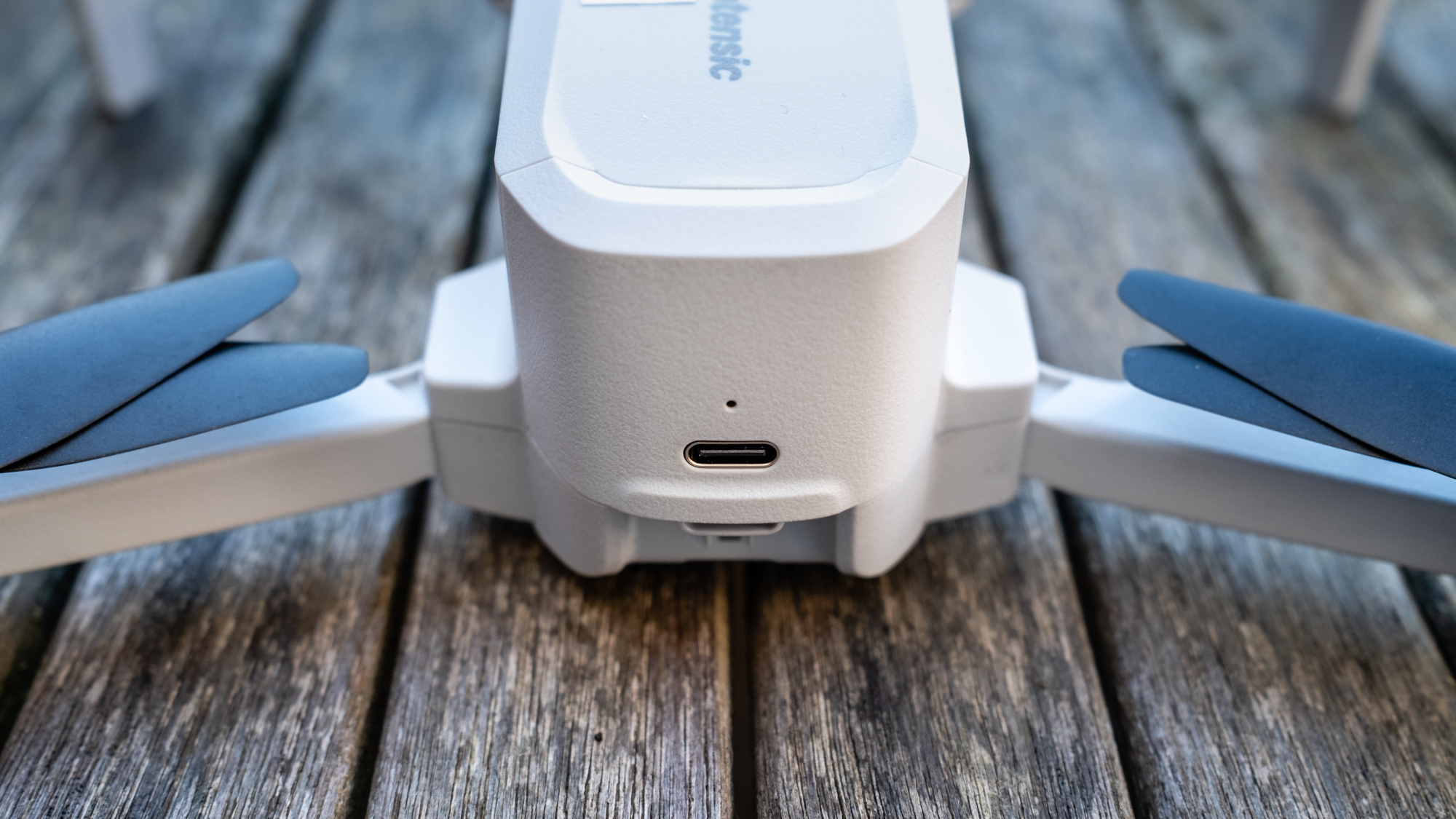
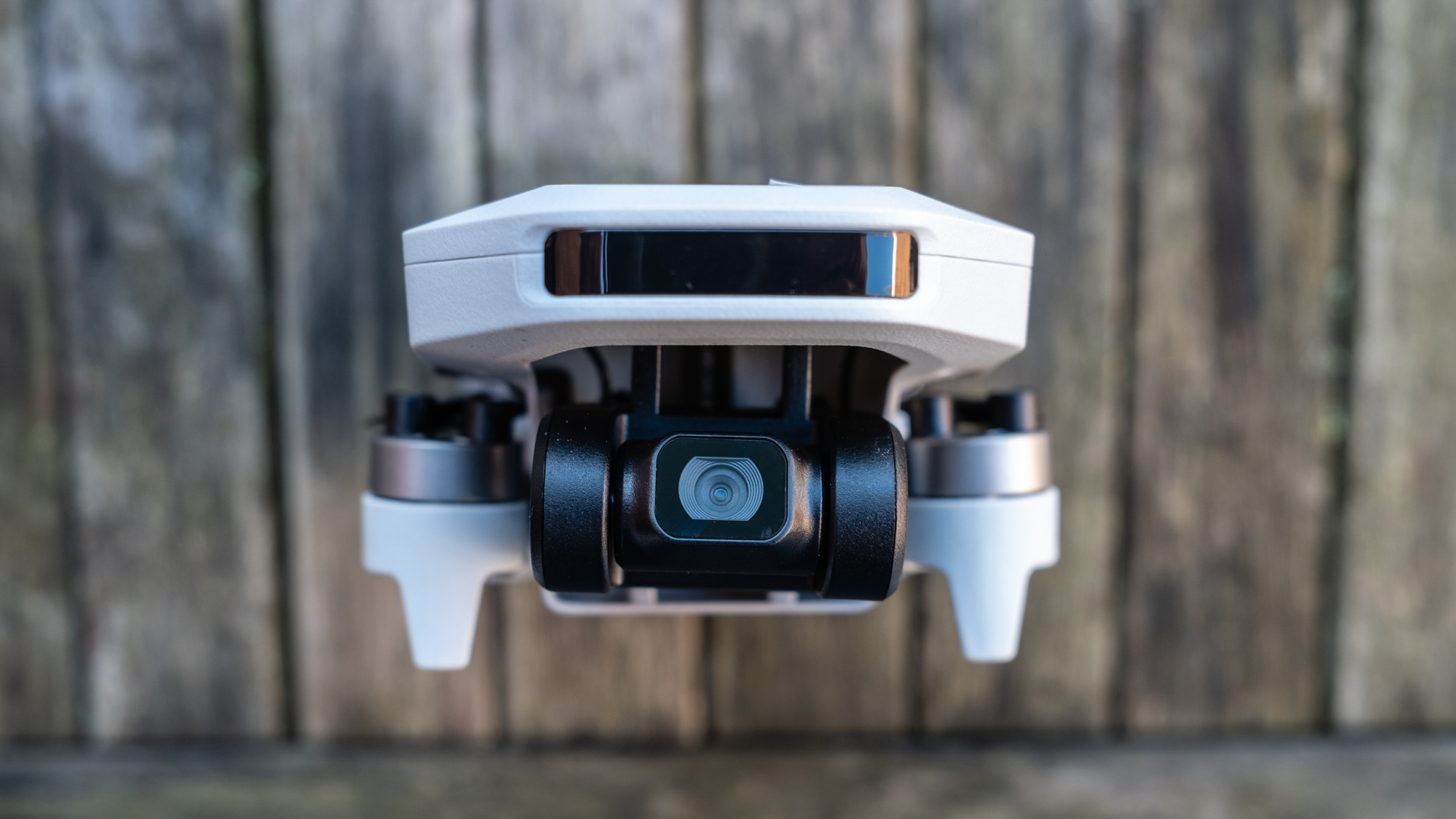
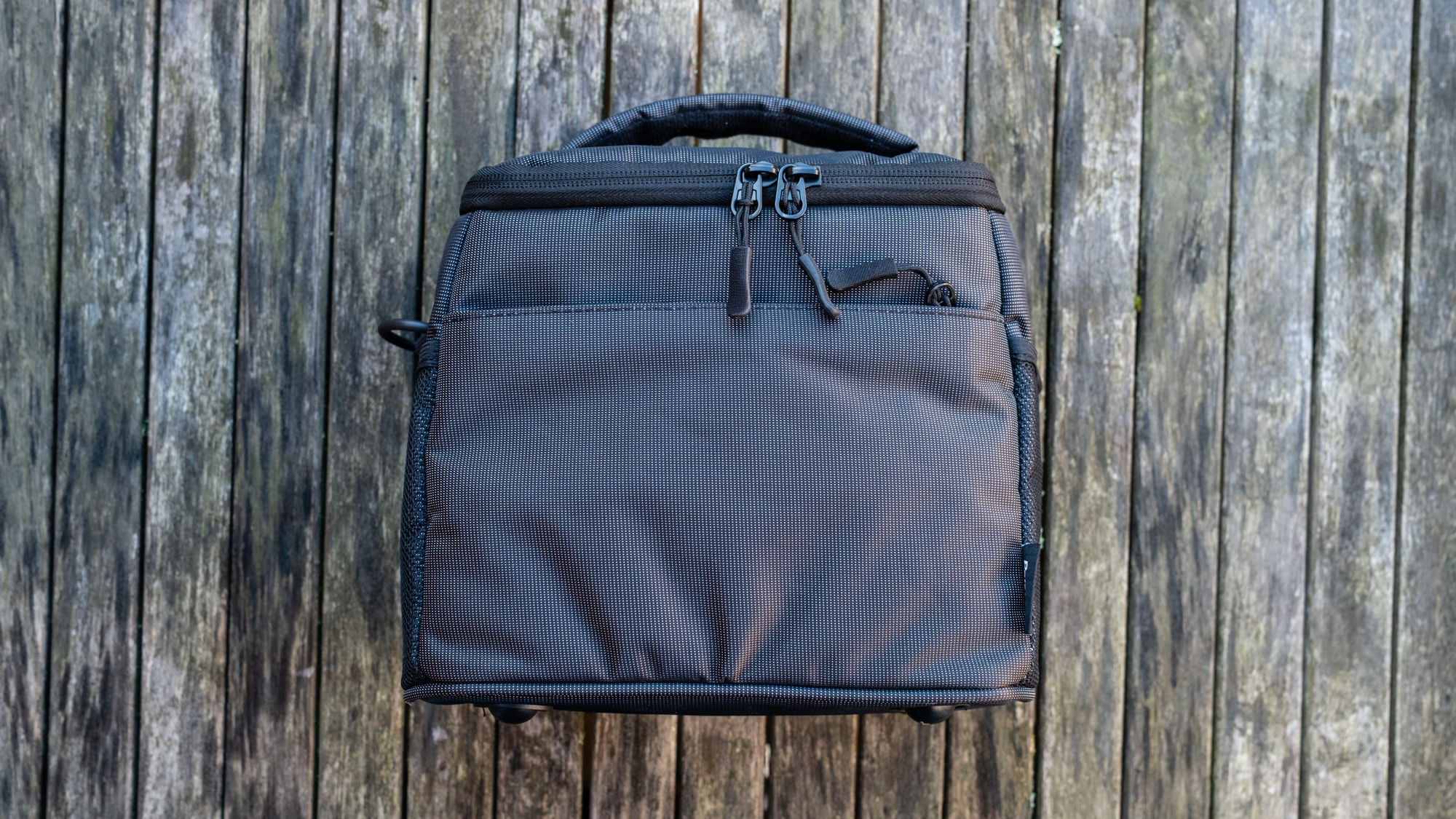
- Three flight modes are available
- GPS positioning
- Basic automated flight patterns
Being an inexpensive beginner model, the Atom SE’s features are limited compared to more expensive models, but that’s no surprise. GPS positioning to hold the drone in position when hovering is provided by both GPS and Glonass satellites. Plus, this provides a map location for the drone in the PotensicPro app during flight making it easier to return to home manually or by using the drone’s Return to Home feature.
Flight modes include Video, Normal and Sport which provide different speeds for flying and shooting video in different situations. And with a top speed of 35mph in Sport mode that can be reached in 2.8 seconds according to Potensic, it’s certainly a fast drone that belies its small size. The flight controls, however, are a little too sensitive which makes the Atom SE quite frisky, despite flying well overall. This can make composing photos tricky so hopefully, this sensitivity can be reduced in a future firmware update.
In terms of safety features, there’s no collision avoidance so you have to take care when flying close to obstacles. But despite no collision avoidance, there are automated flight modes including Follow Me, Circle Flight and Points of Interest with the latter allowing you to plot a flight path for the drone to follow automatically.
All modes work, but they’re certainly not as sophisticated as those provided by more expensive drone models. Other safety features include downward vision sensors and a ToF sensor for indoor flight and situations when the GPS signal is weak or absent, although flying in ATTI mode (no GPS) isn’t recommended for beginners because the drone can drift in the wind.
Potensic Atom SE review: Performance



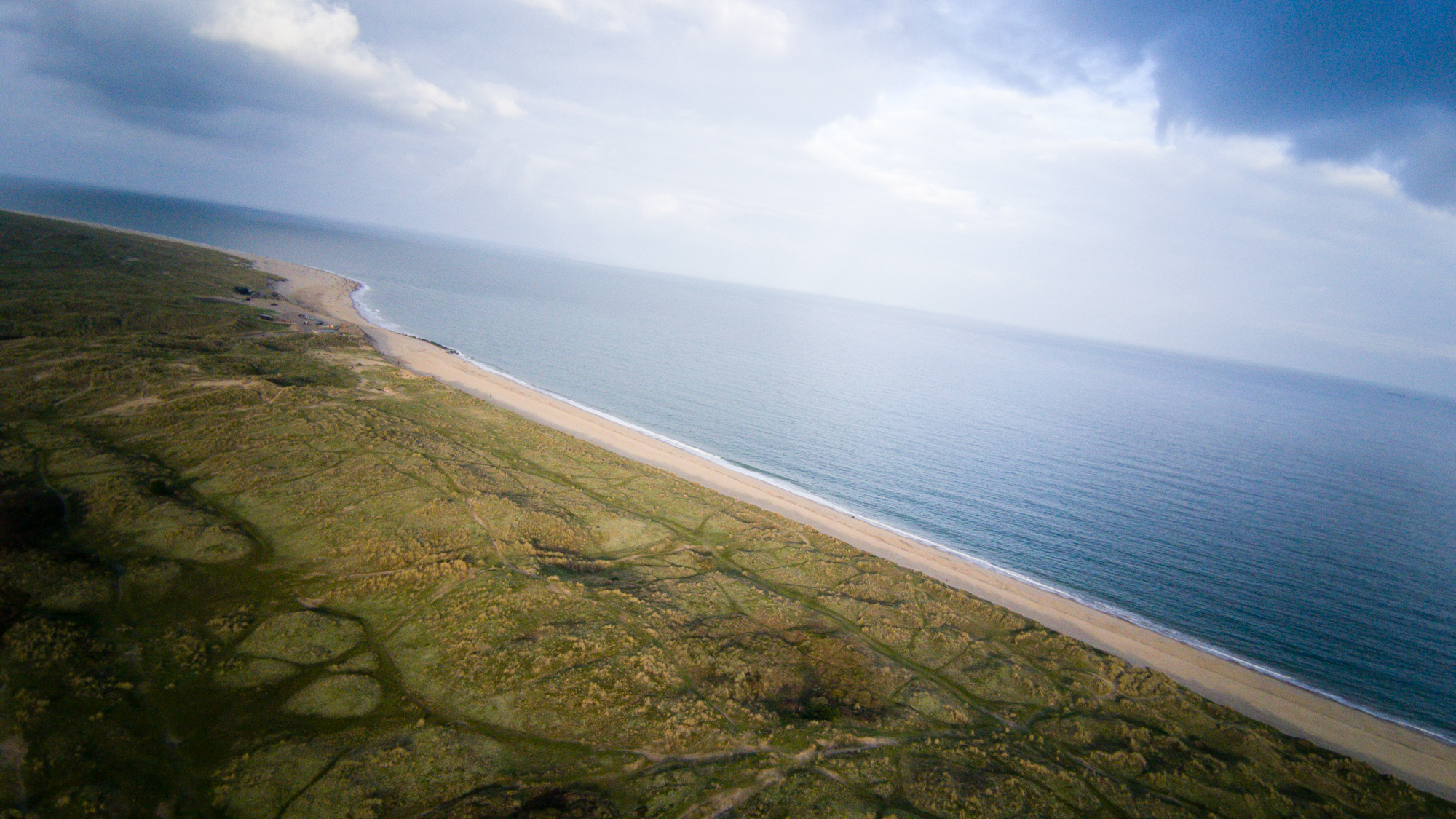

- 12MP Sony CMOS sensor
- No 3-axis mechanical gimbal
- Video up to 4K and Raw photos
The camera on the Atom SE uses a 1/3in 12MP Sony CMOS sensor while the lens provides a 118° field of view. The camera is dampened, but with no 3-axis mechanical gimbal, image stabilization is electronic and provided in-camera to avoid shake in videos. This means that the camera is locked in position so video is captured FPV-style where drone movements are captured rather than being stabilized by a gimbal.
One downside to the locked camera is that when the camera is rolling to maintain position in wind, the horizon can be captured at an angle rather than being level. The camera does offer some movements and can be tilted vertically between +20° to -90° so it can look up slightly, although it can’t quite look straight down despite the -90° angle.
Image quality is good in terms of sharpness in the center of the frame, but there is a fall-off in sharpness towards the edges which is typical of most consumer drones to some degree. ISO noise is also visible at even low settings within the ISO 100-6400 range, and there’s a noticeable vignette in photos. Videos don’t suffer from vignetting which is likely due to less of the sensor and lens being used than when shooting photos.
Video can be shot in 4K at 30fps, 2.7K at 30fps and 1080p at up to 60fps with a maximum bitrate of 40Mbps, which is a high level of compression. Photos can be captured in both JPEG and Raw in a 16:9 ratio rather than in 4:3, but this remains welcome because the ability to edit Raw files provides greater scope for making image adjustments than JPEGs.
Camera functionality is limited overall, with only control of exposure compensation provided for both photos and videos; all other camera settings are automatic. Control over ISO, white balance and shutter speed would be extremely useful and could hopefully be delivered in a firmware update since these are software rather than hardware-based.
Potensic Atom SE review: Cost
The Atom SE is available in a Standard kit and a Fly More Bundle with both including the drone, controller and a battery. The latter also includes a useful shoulder bag to carry the kit alongside an additional battery for increased flight times. The standard kit costs $250 / £279 while the Fly More Bundle costs $300 / £329, and since one battery is never enough it makes sense to opt for the Fly More Bundle.
In addition to the shoulder bag and extra battery, the Fly More Bundle includes a propeller strap, spare propellers, a screwdriver, spare propeller screws, smartphone cables and a USB-C cable for battery charging. At the time of writing, the Atom SE is available in the United States, France, Germany, and the UK.
Should you buy the Potensic Atom SE?
If you’re a drone beginner on a budget, the Atom SE could be the perfect drone for you; you’d struggle to find a similarly priced alternative that’s as well-built and can produce the same level of image quality as the Atom SE. So, for beginners, it’s a fantastic option well worth considering and the Fly More Bundle has everything you need to get started.
For more advanced and professional drone pilots looking for a sub 250g drone, the limited camera controls will be an issue and you wouldn’t be able to consistently produce professional quality video with the drone. Plus, with no 3-axis mechanical gimbal, and only electronic image stabilization to avoid shake in video, footage is captured FPV-style rather than smoothly like drones with a mechanical gimbal.
If this product isn't for you
The Potensic Atom SE is undoubtedly one of the best inexpensive beginner drones available, despite a few shortcomings that could mostly be remedied with firmware updates. For the price, you will struggle to find a drone model that performs as well in flight or can produce equal quality images, so the only way to get a better drone is to spend more and there are two main options available.
The DJI Mavic Mini 3 Pro and the Autel Evo Nano+ are both sub 250g drones offering greater camera control than the Atom SE alongside better image quality. What’s more, both drones also offer more advanced flight features including collision avoidance and Quickshots automated flight patterns. Both the Nano+ and Mini 3 Pro cost more than double the Atom SE, but they are fully featured models that could be used by professionals and enthusiasts alike.
James is an award-winning freelance landscape and portrait photographer, as well as a highly experienced photography journalist working with some of the best photography magazines and websites with a worldwide audience. He’s also the author of The Digital Darkroom: The Definitive Guide to Photo Editing. www.jamesaphoto.co.uk
